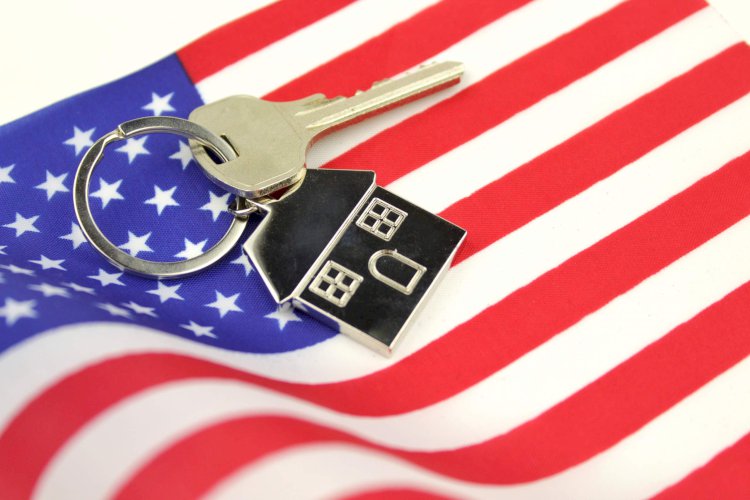Everything You Need To Know About Government-Backed Mortgages And Loans
Explained article containing information about Everything You Need To Know About Government-Backed Mortgages And Loans
Government-backed mortgages can be easier to qualify for compared to conventional loans. This can make them a good choice if you have a lower income, don’t have perfect credit or can’t afford a large down payment. Some borrowers might also qualify for a lower interest rate on a government-backed loan than what they’d get with a conventional mortgage.
There are several government programs to consider if you’re looking for a mortgage, so it’s important to understand how each one works as you compare your options. Here’s what you should know about government-backed mortgages and loans.
What Are Government Loans?
Government home loans are mortgages issued by private mortgage lenders and insured by the federal government. There are several government agencies that offer mortgage programs, including the Federal Housing Administration (FHA), U.S. Department of Agriculture (USDA) and Department of Veterans Affairs (VA).
Because the federal government guarantees these loans, there’s less risk to the lender if a borrower defaults. This is why government-backed loans come with more lenient requirements compared to conventional mortgages. For example, you might qualify with a:
- Smaller down payment: Depending on the type of loan you apply for, down payment requirements can be as low as 0% to 10% of your loan amount. This is much less than the traditional 20% needed for a conventional loan to avoid private mortgage insurance (PMI).
- Lower credit score: You’ll typically need a credit score of at least 620 to get approved for a conventional mortgage. Government-backed loans, on the other hand, usually have lower credit score requirements. For example, you could qualify for an FHA loan with a credit score as low as 500—though having a score as low as this could require a higher down payment. USDA and VA loans have no specific minimum, though lenders often set their own minimums.
- Higher debt-to-income (DTI) ratio: Your DTI ratio is the amount you owe in monthly debt payments compared to your income. Many mortgage lenders require your DTI ratio to be no higher than 43%, but others allow for more wiggle room. For example, government-backed loans generally allow for a maximum DTI of 41% for VA loans and 43% for FHA and USDA loans. But you might still qualify for an FHA loan with a DTI ratio as high as 57%—though this is decided on a case-by-case basis.
Keep in mind, too, that government-backed loans are considered non-conforming loans—meaning they operate outside of the standards set by Fannie Mae and Freddie Mac for conventional mortgages. Additionally, while Fannie Mae and Freddie Mac are both government-sponsored enterprises, they aren’t a source of government-backed loans. Instead, these entities are owned by private shareholders and buy mortgages from lenders so those lenders have more funds to continue issuing mortgages—which ultimately supports the nation’s home mortgage system.
How Do Government-backed Mortgages Work?
The process for getting a government-backed mortgage is similar to applying for a conventional loan—you’ll still work directly with a mortgage lender that will fund the loan if you’re approved. However, unlike conventional mortgages where the lender is at risk if a borrower defaults, government-backed loans are insured by a federal agency, which protects the lender.
While government-backed mortgages are generally easier to qualify for, you’ll still need to meet the credit, income and financial requirements set by the lender as well as the government agency that backs the loan. It’s also common for government programs to restrict eligibility to certain backgrounds. For example, VA loans are only available to military households, and USDA loans require you to live in a rural area.
Types of Government-Backed Mortgages
There are a few main types of government-backed mortgages available, including:
FHA Loans
FHA loans are designed to help low- and moderate-income borrowers qualify for home financing. They also come with lower credit score and down payment requirements. It’s possible to qualify with a median FICO score as low as 500, though most FHA lenders require a score of at least 580.
Another significant benefit of FHA loans is the low down payment requirement. The minimum down payment for an FHA loan is usually only 3.5% of the loan amount if you have a credit score of 580 or above. If you have a score below this, you’ll likely need to put at least 10% down.
Keep in mind that all FHA loans require you to pay a mortgage insurance premium (MIP). However, if you put at least 10% down, you’ll only have to pay this for the first 11 years of your loan; otherwise, you’ll pay it throughout your entire repayment term. Note that mortgage insurance on an FHA loan includes an upfront MIP of 1.75% of your total loan amount, plus an annual MIP of 0.45% to 1.05% of the loan amount, depending on your loan amount, repayment term and loan-to-value (LTV) ratio.
Related: FHA Loan Calculator
USDA Loans
USDA loans are available to low- and moderate-income borrowers who live in rural areas, which the USDA defines as small communities with populations of fewer than 35,000 residents. To be eligible for a USDA-guaranteed loan—meaning it’s funded by a private lender—your income can’t exceed 115% of the area’s median household income. Limits for direct loans funded by the USDA itself can be as low as 50% of the median income in certain areas.
While USDA loans don’t have a specific minimum credit score requirement set by the USDA, you’ll need a score of at least 640 to qualify with most USDA mortgage lenders. These loans also don’t require a down payment.
Note that you’ll have to purchase two types of mortgage insurance for a USDA loan, which will cover your payments in case you lose your job and can’t pay. These include 1% of your loan amount due at closing as well as 0.35% of your original loan amount per year for the duration of the loan.
Related: USDA Mortgage Loan Calculator
VA Loans
VA loans are available to military service members, veterans and their surviving spouses. Like USDA loans, VA loans don’t require a down payment and don’t have a specific minimum credit score—though some VA mortgage lenders might require a score of at least 580.
You also won’t have to worry about mortgage insurance with a VA loan, regardless of how little you put down. However, a one-time VA funding fee is due at closing and is contingent on your down payment amount. While this fee can be waived in limited cases, such as for veterans with service-connected disabilities, you can expect to pay:
- 2.3% ($2,300 per $100,000 borrowed) for down payments less than 5%
- 1.65% ($1,650 for every $100,000 borrowed) for a down payment from 5% to 10%
- 1.4% ($1,400 for every $100,000 borrowed) for down payments exceeding 10%
Note that this fee will increase if you take out additional VA loans.
To participate in the VA loan program, you must get a Certificate of Eligibility (COE) from the VA. You can apply for this online or by mail, or your VA lender can request it for you.
Related: FHA Vs. Conventional Loans Vs. VA Loan
Native American Direct Loans (NADLs)
The VA also oversees the NADL program, which sponsors loans to help buy, build or improve homes on federal trust land. You could be eligible for this type of loan if you’re a Native American veteran or a non-Native American veteran married to a Native American. You’ll also need to provide a COE and meet other VA loan requirements.
Like with other VA mortgage programs, you’ll pay a one-time funding fee at closing. This is 1.25% for purchase loans and 0.5% for mortgage refinances.























